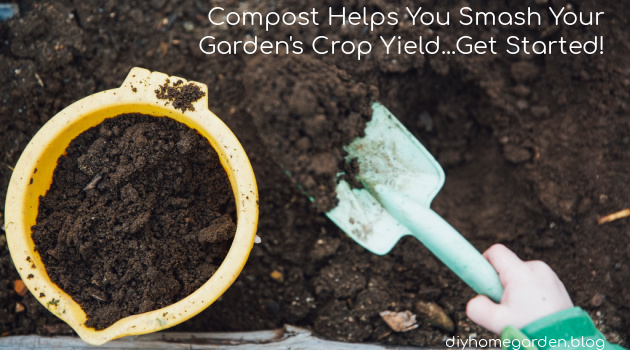Lilacs are one such easy-to-grow and care for shrub which not only offers aromatherapy benefits (owing to its calming effects) but is also used for medical purposes. In first aid, the fragrant essential oil is used to treat skin conditions like sunburns, rashes, and minor cuts.
To many, it’s a cherished plant owing to the pleasant smell and beautiful flowers it brings forth—officially announcing the arrival of spring.
The color of the flowers varies depending on the soil type, weather (dry versus wet AND hot versus cool), environment, year, and of course, the overall location differences.
Among the numerous varying types and color of lilacs are:
Types of Lilacs
- Common lilac (Syringa vulgaris)—Just like the name, Syringa vulgaris, is the most common lilac and puts forth lilac-colored flowers with a strong fragrance. It grows up to about 20 ft.
- Tree lilacs ( amurensis)—this lilac variety grows up to 30 ft. with off-white flowers.
- Persian lilac ( persica)—It grows to a height of 10 ft. and puts forth pale lilac flowers, almost half the diameter of those of the common lilacs.
- Himalayan lilac ( villosa)—Also known as late lilac. It grows up to 10 ft. and exhibits rose-like flowers.
- Dwarf Korean lilac ( palebinina)—this variety grows only 4 ft. and their flowers resemble those of the common lilac.
Growing lilacs
Lilacs do well in rich, well-drained soil with a neutral pH value (that is, slightly acidic to slightly alkaline), usually between 6.5 and 7.0.
They mostly prefer loamy soils but can still thrive in clay soils, though not as well. Best planting time is either in the spring or fall.
When exposed to full sun (at least 6 hours of sunlight a day), lilacs speak volumes in their blooms; which is, of course, the opposite of when you grow them in full shade. Some little shade—yes, but they won’t bloom as well as when in full sun.
USDA hardiness growing zones range from 3-7 for most of the lilac varieties as they require the freeze of winter to break dormancy and put forth flowers.
Lilac roots thrive best in well-drained soil, and so, water fully. However, avoid overwatering as this may lead to poor blooms, and in some cases, rotting problems.
Here are some watering tips:
Watering tips for your shrub
- Water your lilac plant at the base. You do not want to expose your blooms to mildew problems or make them decline quickly, and so, avoid overhead watering, especially during the flowering period.
- Irrigate, just enough (2 inches water per plant) to keep the soil moist up to 12 inches deep. Deep infrequent watering is the goal here. You can water once every 10 or 14 days beginning from spring to when the blooming period ends.
- After this (the flowering period), reduce watering, and only irrigate during the extended dry periods when now the soil (top 3 inches) begins to dry up. Wilting of the leaves during the dry season is also an indication that your lilacs need some watering.
Mulching
Applying mulch helps ensure the soil maintains a consistent amount of moisture while also improving the health of the plants.
- Simply spread a 2-3 inch layer of organic mulch (this can be bark chips) around the base of your lilac plant, ensuring a 3-inch space between the mulch and the base of the lilac trunk. This is to help reduce the risk of diseases and rot.
- Consider replenishing the early spring mulch in fall—just before the onset of the rainy winter season. Compacted mulch retains too much moisture, especially in wet weather, and this can encourage rotting of the roots.
Note: Yellowing of lilac leaves and or wilting on the lower branches is an indication of overly wet soil. Therefore, ensure you don’t over-mulch; otherwise, you’ll be encouraging soil problems such as rot and diseases, especially if you reside in moist coastal areas.
Pruning your shrubs
Pruning your lilacs will help promote blooming and also ensure good air circulation. This, in turn, prevents powdery mildew—a fungal disease that usually covers the leaves with a grey-white powder.
- Prune right after the lilacs bloom—which is during the spring. As you know the shrubs bloom on old wood and pruning them later in the summer may mean removing the wood.
- Also, cut the dead flowers off once they’re done blooming. This helps prevent seed formation and encourage more blooms in the next spring season.
- For old overgrown lilacs, cut the whole plant back in late winter—to about 6-8 inches of the ground. This will encourage the development of several shoots during the growing season.
In the following year (in the late winter) select and retain the several strong and healthy shoots for the formation of the shrub framework.
Remove all the other shoots at ground level then cut back all the retained shoots to a level just above the bud to promote branching.
Prune regularly and ensure the health and vigorous growth (bloom for that matter) of your lilacs by cutting some of the oldest branches at least every 3-5 years.
 Caring for lilacs
Caring for lilacs
Generally, lilacs require very minimal maintenance if at all you want to show them some loving. Otherwise, they can survive on their own.
Just look at any old abandoned farmhouses where these splendid flowers exist; you’ll notice they still bloom vigorously. Call it “self-care”…they know how to do it best.
But to significantly improve your lilacs:
- Consider applying compost layer under the plant each spring, followed by some mulch to help control weeds and retain the required level of moisture.
- Allow them the benefit of spring feeding, though ensure you keep the nitrogen levels in check as too much of it can lead to poor blooms.
- To reduce powdery mildew and keep the aphids at bay, consider spraying your lilacs with canola-based horticultural oil in the summer right after they’ve bloomed. Do this while strictly following the label instructions.
Propagation tip

Wait until fall before getting it out to allow it to grow some roots. This process is essential for the successful growth of the plant and its sustenance from season to season.


